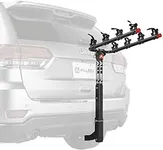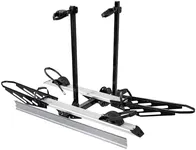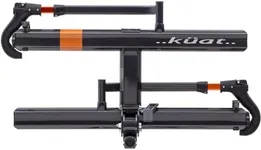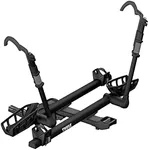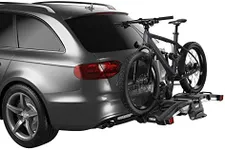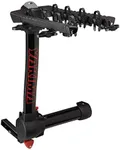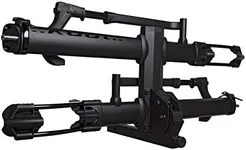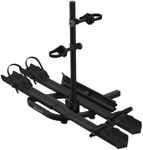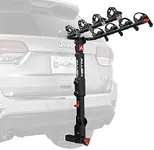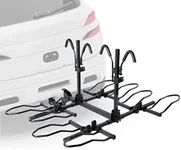Buying Guide for the Best Hitch Bike Racks
Choosing the right hitch bike rack can make transporting your bikes easier and more secure. The right rack will depend on your vehicle, the number of bikes you need to carry, and your personal preferences. Here are some key specifications to consider when selecting a hitch bike rack, along with explanations to help you make the best choice for your needs.Hitch Receiver SizeThe hitch receiver size is the dimension of the opening on your vehicle's hitch where the bike rack will be mounted. This is important because the bike rack must fit securely into the hitch receiver. Common sizes are 1.25 inches and 2 inches. If you have a smaller vehicle, you might have a 1.25-inch receiver, while larger vehicles often have a 2-inch receiver. Make sure to check your vehicle's hitch size before purchasing a rack to ensure compatibility.
Bike CapacityBike capacity refers to the number of bikes a rack can hold. This is crucial because you need a rack that can accommodate all the bikes you plan to transport. Racks typically hold between 2 to 5 bikes. If you only need to carry one or two bikes, a smaller capacity rack will suffice. However, if you have a family or frequently transport multiple bikes, opt for a higher capacity rack. Consider your current and future needs when deciding on bike capacity.
Rack TypeThere are different types of hitch bike racks, including platform racks and hanging racks. Platform racks support bikes by their wheels, making them easier to load and providing more stability. Hanging racks support bikes by their frames, which can be lighter and more compact. If you have heavier bikes or want easier loading, a platform rack might be better. If you prefer a lighter, more compact option, a hanging rack could be the way to go. Think about how you will use the rack and what features are most important to you.
Security FeaturesSecurity features on a hitch bike rack help protect your bikes from theft. These can include locking mechanisms for both the rack and the bikes. This is important if you plan to leave your vehicle unattended with the bikes on the rack. Look for racks with integrated locks or the ability to add locks. If security is a high priority for you, choose a rack with robust locking features to give you peace of mind.
Ease of UseEase of use refers to how simple it is to install the rack on your vehicle and load/unload bikes. This is important because a user-friendly rack will save you time and effort. Features like tool-free installation, tilting mechanisms for trunk access, and easy bike loading systems can make a big difference. If you frequently use the rack, prioritize ease of use to make your experience more convenient and enjoyable.
Weight CapacityWeight capacity is the maximum weight the rack can support. This is crucial to ensure the rack can handle the combined weight of your bikes. Racks have different weight limits, typically ranging from 30 to 60 pounds per bike. If you have heavier bikes, such as electric bikes, make sure to choose a rack with a higher weight capacity. Consider the weight of your heaviest bike and ensure the rack can support it safely.
Vehicle CompatibilityVehicle compatibility refers to how well the rack fits with your specific vehicle model. This is important because not all racks fit all vehicles. Some racks are designed for specific types of vehicles, such as SUVs or sedans. Check the manufacturer's guidelines to ensure the rack is compatible with your vehicle. If you have a unique vehicle or specific needs, look for racks that offer adjustable features to fit a wider range of vehicles.
